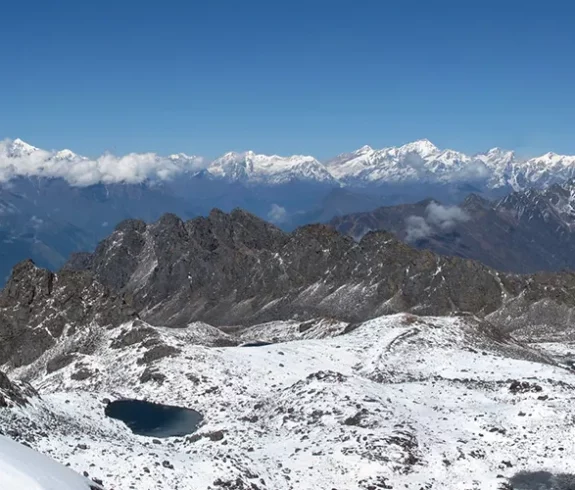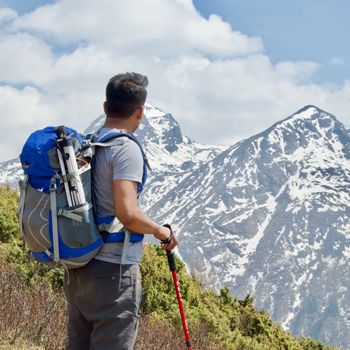“Have you guys brought raincoats? The sky is dark; it might rain,” Basu texted us from Kutumsang when we had just reached Chanaute – a small bazaar on the banks of the Melamchi River. There was no way we could get raincoats in this small marketplace. We decided to buy plastic sheets instead as they could cover ourselves and our backpacks should it rain. Sun had already set when we reached Kutumsang – a small village on the border of Nuwakot and Sindhupalchowk districts – where Basu eagerly awaited us for the trek to Gosaikunda.
Three – me, my cousin Ronald and his wife Linda – were on a trek to Gosaikunda Lake. And Basu, headmaster of a local school in Kutumsang, was to guide us to the sacred lake. Most trekkers start the Gosainkunda Trek from Dhunche – the district headquarters of Rasuwa – and descend to Sundarijal via Kutumsang. But we chose the opposite route. Though the trek starts from Sundarijal, we drove directly to Kutumsang, as regular bus service to this place is available from Kathmandu. But it took us nearly 10 hours to travel a distance of less than 100 km. That too on a bus loaded with stuff ranging from rice sacks to cement and corrugated zinc sheets. Not to be forgotten is the narrow windy road that repeatedly sent shivers to our bones.
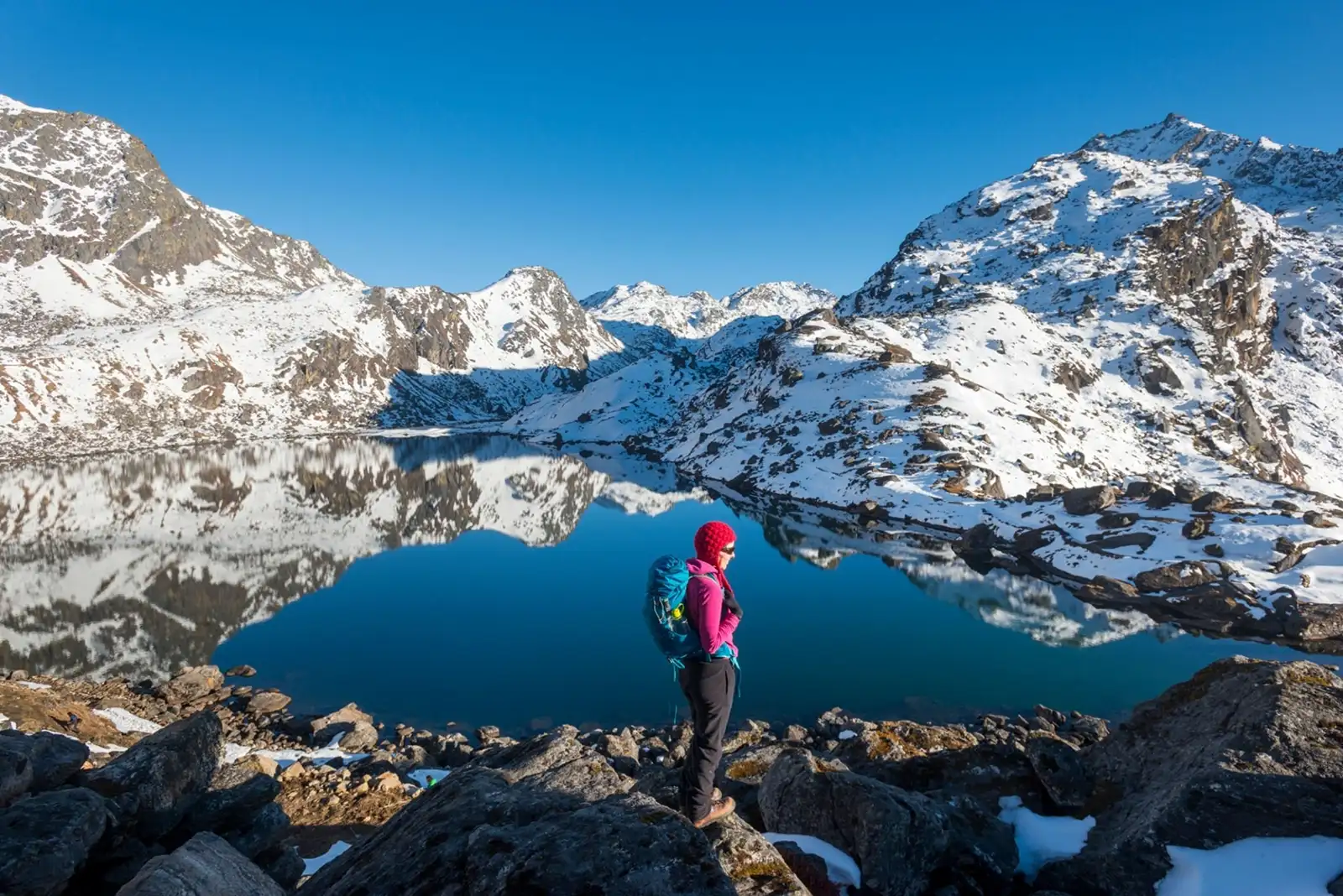
Basu took us to his quarter and briefed us on our plan. We were to start the trek to Gosaikunda early the following day and try to reach Ghopte. If we managed to reach Ghopte, we could reach Gosaikunda by noon the next day. Linda volunteered to prepare dinner. After dinner, we retired to our room as we were to start the trek early in the morning.
We started the trek at 5:30 after having noodles soup. We had already prepared our backpack the other night. The trek was pleasing. Cool morning air greeted us, and the chirping of mountain birds energized us. After a trek of around two hours, we stopped at a small tea shop for tea and light snacks. The wonderful host, an acquaintance of Basu, served us a steaming cup of tea and some biscuits.
We resumed the trek and reached Malechaur after around an hour for Gosaikunda Trek. There was ample pastureland and a few stupas in Malechaur. We offered some flowers at the stupas and walked toward our destination. We planned to reach Thadepati for lunch. But the trek soon started taking a toll on us. We were sweating, and our legs were becoming heavy. We arrived at Magengoth at around noon. Our initial plan was to have lunch at Thadepati or Merikharka. But our slow pace forced Basu to change the plan.
Kalu Sherpa, the owner of Hotel Greenview & Lodge, prepared a delicious lunch for us. During our lunchtime chat, Sherpa, the coordinator of hotels inside the Langtang National Park (LNP), came down heavily on the national park officials. Commenting on LNP’s proposal to remove existing lodge owners and give their property on lease through auction, Sherpa said local hoteliers wouldn’t leave their property quickly. “We have invested millions of rupees here. There is no way we are leaving it for nothing,” he urged the park officials to revisit the decision. We encouraged Sherpa to keep up the fight; his stance is genuine.
After lunch, we bid farewell to our wonderful host and started walking toward Thadepati. The trail from Magengoth is downhill for about an hour or so. It passes through pasturelands and rhododendron and pine forests. The walk was pleasing. But about a walk of nearly an hour from Magengoth, it started raining. We covered ourselves with plastic sheets and continued our walk.
We had to slow down the pace as the trail was slippery. Things turned worse. Hailstones started falling, and the sky turned to pitch dark. But we had no option but to continue the walk. After a walk of nearly three hours, we arrived at Thadepati (3600m) – a small junction with 4-5 lodges. There are two trails from where – one leads to Gosainkunda Lake, while the other descends to Melamchi Gaun in the Helambu Region.
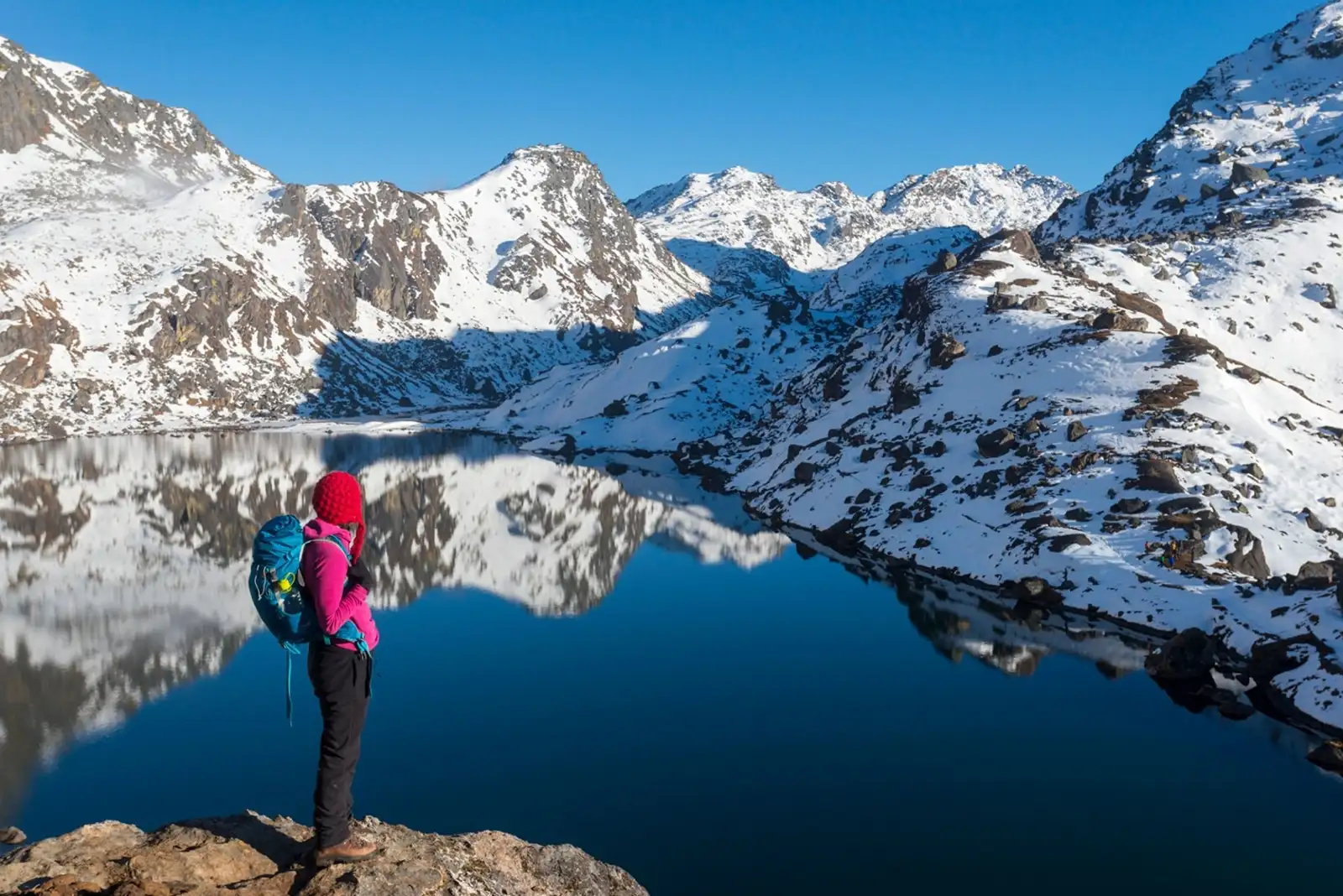
We rushed to the first lodge and sat beside the fireplace. We ordered butter tea and hot soups. After about an hour, the rain subsided, and we ventured out to see the place. It was white all around. Initially, we presumed it was snow. But we were wrong. There were hailstones all around – in some places, hailstones were around one foot deep. We were very excited; we took pictures, made a snowball, and hit each other.
It was 3 pm, and we were undecided about advancing because hailstones had made the trail slippery. We could not reach Ghopte – our planned destination for the day. But Basu encouraged us and said we could at least reach Merikharka. We packed our bags and headed downward. Basu led the walk as only he knew where the trail was. We slowly followed him.
The path was narrow and slippery. In some places, we had to use both our hands and legs. After a slow walk of about one and a half hours, we reached Meri Kharka. There is only one lodge at Meri Kharka. An acquaintance of Basu runs the lodge. So it was more of a home for us. Our septuagenarian host was the most pleasant person I met on this trek. We changed our clothes, sat beside the fireplace, and started sipping tea. The older man prepared a delicious dinner – rice, lentil, and gravy of gundruk (fermented lettuce leaf) and soybean.
Our hope of having a sunny day evaporated as it rained throughout the night. Rain in the lower area means heavy snowfall in the Lauri Bina Pass and Gosainkunda Lake. We weren’t prepared for heavy snow — we didn’t have proper clothes and shoes to walk through the snow-filled trail. It was still raining when we woke up the next day. The nearby hills were blanketed with snow, and the air was chilly. After breakfasting Tibetan pancakes, we thanked our host and started the trek toward Ghopte.
The trek remained largely uneventful. The rain was playing hide and seek with us. Though hailstones had melted, the trail was filled with snow in most places. We walked through sunshine, fog, rainfall, and snowfall – a fantastic experience for all of us. After having tea at Ghopte, we walked toward Phedi. It was around 1 pm when we reached Phedi. We ordered lunch and sat by the fireside to warm ourselves.
The trekkers descended from Lauri Bina Pass and told us that knee-deep snow was in the past. We gave up hope of reaching Gosainkunda. But one Sashi Adhikari, guiding two German trekkers, encouraged us. He asked us to join them the following day and assured us he would guide us to Gosainkunda. His words soothed us.
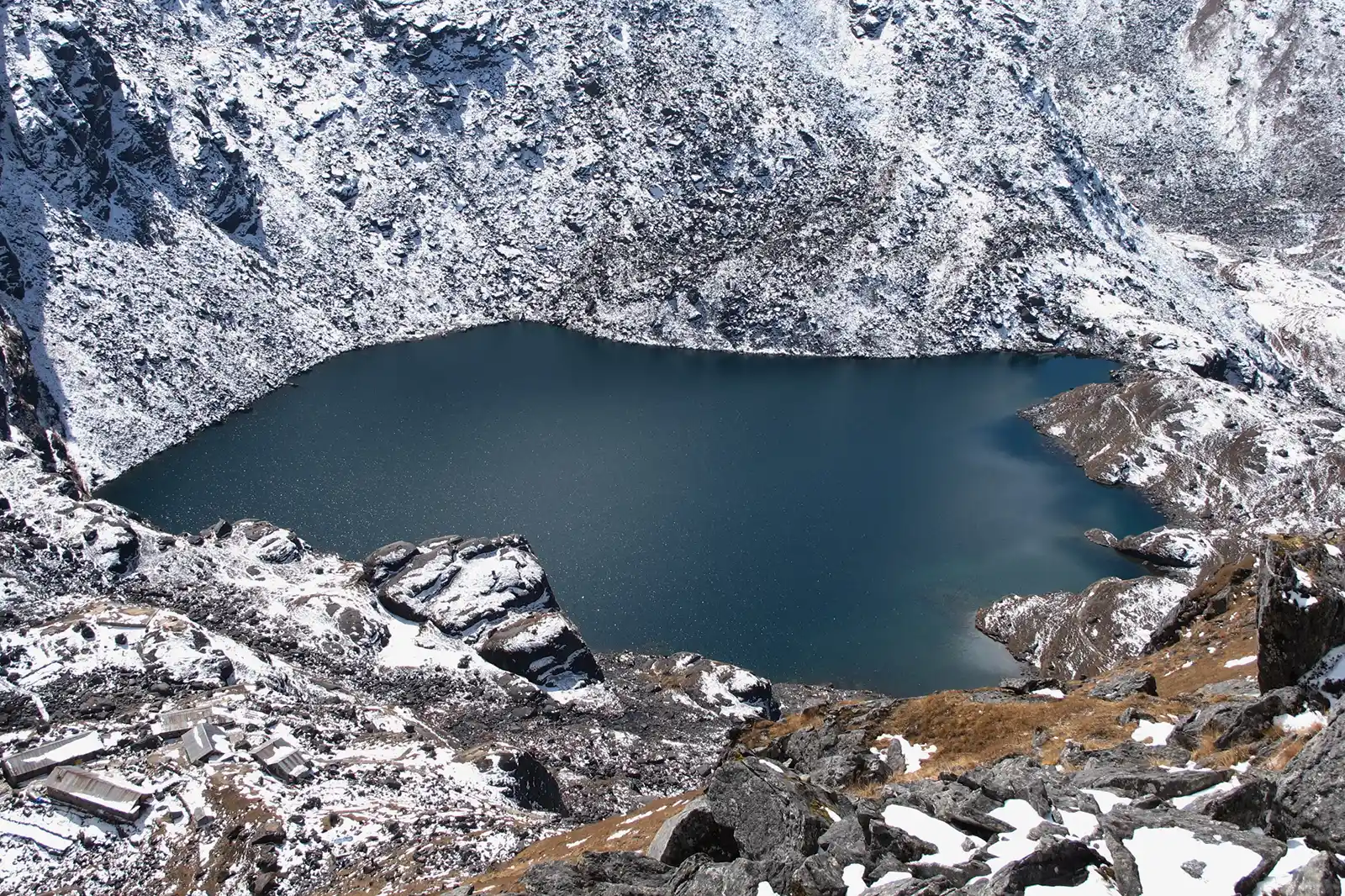
The lodge at Phedi was covered with fresh snow the next day. Today is the most challenging trek day as we reach Gosainkunda Lake after crossing the Lauribina La Pass (4610 meters). We started the trek at around 6 am. Around a dozen trekkers were going toward the pass. We were treated in their footsteps as the track was covered by snow.
The high altitude was becoming difficult for us to take significant steps. We decided to stroll as high altitude is not the place to test your limits. After about two hours, we reached the high camp, where we had tea and hot soup. From here, we could see trekkers descending from the pass. It raised our hopes of reaching the sacred lake. If they could descend, there was no reason why we couldn’t climb up to the pass.
It was nearly noon when we reached the pass. We took pictures at the pass and started a downhill trek to Gosainkunda. After a walk of fewer than five minutes, we saw Surya Kunda, wholly frozen, on the left side of the trail. We saw two more lakes before Gosainkunda – this time on the right side of the trail. Both the lakes were covered with snow. After a walk nearly an hour from the pass, we finally saw Gosainkunda. Thankfully, it was not covered with snow, unlike the other lakes. But the trail was covered by snow.
It still took nearly an hour to reach the lake as the track was full of snow and slippery. We paid homage to Lord Shiva at Trishuldhari and took some pictures. We checked into a hotel at the lakeside and ordered lunch. We decided to offer puja to Lord Shiva early the following day.
Situated at 4,380 meters, Gosainkunda is a freshwater lake in Langtang National Park in the Rasuwa district. The lake is spread over 34 acres. The Gosainkunda Lake Complex, including Surya Kunda, Bhairav Kunda, Nag Kunda, and Saraswati Kunda, was designated a Ramsar site in 2007. The lake flows down to form the Trishuli River – one of the major tributaries of the mighty Sapta Gandaki River that flows through central Nepal.
The lake holds great religious significance as Lord Shiva is believed to have rested inside the lake after he consumed Kalkut Poison, which was churned during the Samunda Mantha. During the Ganga Dashahara and Janai Purnima festivals, the lake complex wears a festive look when pilgrims from all over Nepal and different parts of India visit the holy place. It is also a popular destination for trekkers in the Langtang Region.
Today is the last day of our trek to Gosaikunda. We woke up early in the morning and rushed to the lake to offer puja to Lord Shiva. The Gosainkunda Peak was already glittering in the sunlight. The reflection of the peak in the serene lake will remain in your heart for a long. After performing pooja to Lord Shiva, we returned to the hotel, breakfasted, and started the trek toward Dhunche.
The trail until Lauribina was challenging. The snow had started melting, and the track was slippery. A small mistake, and you plunge hundreds of feet down. We hiked, treading on footsteps left by fellow trekkers. We had to use our hands and feet to negotiate the track in some places. It took us nearly two hours to reach Lauri Bina. We heaved a sigh of relief. Yes, we had done it!! The trail from Lauri Bina is mostly downhill.
The walk is pleasing as it passes through rhododendron and juniper forests. The chirping of birds keeps you rejuvenated throughout the trail. We had lunch at Chandanwari and continued our trek. At around 4 pm, we crossed Ghattekhola and headed toward Dhunche – the district headquarters of Rasuwa. We reached Dhunche at around 5 pm. We booked tickets for the next day and strolled in the bazaar area for some time. We had an early dinner and left for bed at around eight, as all of us were tired.
The trek offered us the experience of a lifetime because it was the first time we crossed such a high pass. Also, it was our first walk on the snow-filled trail. Not to mention the hardship as we all were unprepared for the snow – we didn’t have good boots, warm trousers, and warm jackets – as we presumed there wouldn’t be snow in summer. Though we completed the trek to Gosaikunda, it taught us a valuable lesson.
— Donald M. Thurston
